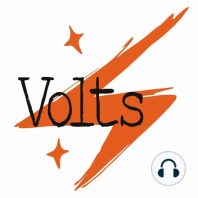21 min listen
Volts podcast: Sen. Tina Smith on the promise of a Clean Electricity Payment Program
FromVolts
ratings:
Length:
37 minutes
Released:
Sep 1, 2021
Format:
Podcast episode
Description
In this episode, Sen. Tina Smith (D-MN) discusses a policy that she has proposed in the Senate and is working to get included in the upcoming reconciliation bill: a Clean Electricity Payment Program (CEPP), which would aim to reduce carbon emissions in the US electricity sector 80 percent by 2030. She also shares some excellent thoughts on the filibuster!Full transcript of Volts podcast featuring Sen. Tina Smith (D-MN), September 1, 2021(PDF version)David Roberts:There are lots and lots of policies being discussed for inclusion in the Democrats’ upcoming budget reconciliation bill, from a childcare tax credit to universal pre-K to a wide range of climate and clean-energy measures.According to the office of Senate Majority Leader Chuck Schumer (D-NY), the climate provisions in the bill would collectively reduce total US greenhouse gas emissions 45 percent below 2005 levels by 2030 — getting us close to America’s Paris agreement pledge. Schumer’s numbers have not yet been backed up by outside analysts, so they should be taken with a grain of salt for now. But what’s clear, and unlikely to change, is that the bulk of the emission reductions will come from the electricity sector — specifically, from the clean-energy tax credits and the Clean Electricity Payment Program. As regular Volts readers know, the Clean Electricity Payment Program is a version of the more familiar Clean Energy Standard that has been modified to fit within the rules of budget reconciliation. It would set up a federal program that would offer utilities financial incentives to increase their proportion of clean energy and levy fines on those that failed to do so. Its goal would be to reduce emissions from the US electricity sector 80 percent by 2030.As Schumer’s graph shows, the Clean Electricity Payment Program, in combination with the extension and expansion of the clean-energy tax credits, would be responsible for almost 42 percent of the bill’s total reductions. To hear more about the program and how it will work, I talked with Minnesota Senator Tina Smith (D), the policy’s sponsor and its greatest champion in the Senate. Smith is one of the handful of senators with in-depth knowledge of the dynamics in the US electricity sector, and she’s deeply involved in budget negotiations, so I was excited to ask her about how the program would work, what kinds of jobs and projects it might produce, how it might affect coal states, and of course, because I am me, what she thinks about the filibuster. Senator Tina Smith, thank you so much for coming on Volts. Sen. Tina Smith:Well, thank you, David. It is terrific to be with you. David Roberts:We're going to talk today about clean electricity policy and the politics of getting it passed, which are two of my very favorite subjects in the world, so let's just dive right in. Senator Smith, I’m pretty confident that Volts listeners are familiar with state-level policies, renewable portfolio standards or clean energy standards at the state level, that mandate that utilities in the state increase their proportion of clean energy. It’s a regulatory mandate passed by the state government; these are familiar, there are dozens of them across the country. The Clean Electricity Payment Program that you have proposed is not quite that. So why don't you start by telling us what it is and how it is similar and different to these more familiar state policies? Sen. Tina Smith: Well, the basic goal is the same. We want to move the power generating sector so that it is adding clean energy. One way of doing that is to have a regulatory framework that says, you will add clean energy, and if you don't, you'll pay a penalty. But another way of achieving that goal of adding clean power is to do what we're doing with the Clean Electricity Payment Program. This is a plan that says: We will provide financial incentives to utilities to add clean power; there'll be a fee if you fail to add clean power; and our goal is to get, on a national average
Released:
Sep 1, 2021
Format:
Podcast episode
Titles in the series (100)
What the Georgia Senate wins do (and don't) mean for climate policy by Volts
